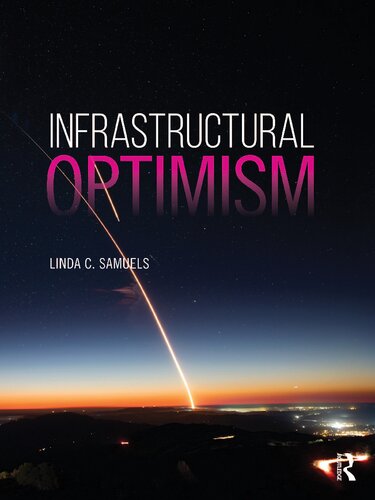

Most ebook files are in PDF format, so you can easily read them using various software such as Foxit Reader or directly on the Google Chrome browser.
Some ebook files are released by publishers in other formats such as .awz, .mobi, .epub, .fb2, etc. You may need to install specific software to read these formats on mobile/PC, such as Calibre.
Please read the tutorial at this link: https://ebookbell.com/faq
We offer FREE conversion to the popular formats you request; however, this may take some time. Therefore, right after payment, please email us, and we will try to provide the service as quickly as possible.
For some exceptional file formats or broken links (if any), please refrain from opening any disputes. Instead, email us first, and we will try to assist within a maximum of 6 hours.
EbookBell Team

4.8
84 reviewsInfrastructural Optimism investigates a new kind of twenty-first-century infrastructure, one that encourages a broader understanding of the interdependence of resources and agencies, recognizes a rightfully accelerated need for equitable access and distribution, and prioritizes rising environmental diligence across the design disciplines. Bringing together urban history, case studies, and speculative design propositions, the book explores and defines infrastructure as the basis for a new form of urbanism, emerging from the intersection of architecture, landscape architecture, and urban design. In defining this new infrastructure, the book introduces new dynamic and holistic performance metrics focused on "measuring what matters" over growth for the sake of growth and twelve criteria that define next generation infrastructure. By shifting the focus of infrastructure – our largest public realm – to environmental symbiosis and quality of life for all, design becomes a catalytic component in creating a more beautiful, productive, and optimistic future with Infrastructural Urbanism as its driver. Infrastructural Optimism will be invaluable to design, non-profit and agency professionals, and faculty and students in the fields of architecture, landscape architecture, and urban design, working in partnership with engineers, hydrologists, ecologists, urban planners, community members, and others who shape the built environment through the expanded field of infrastructure.